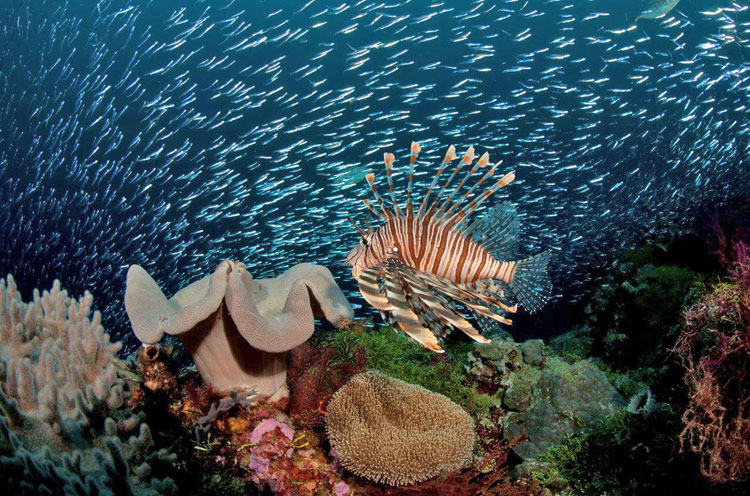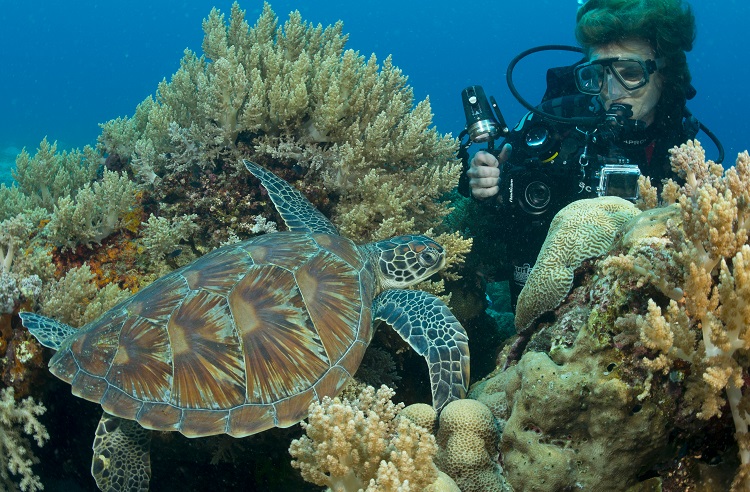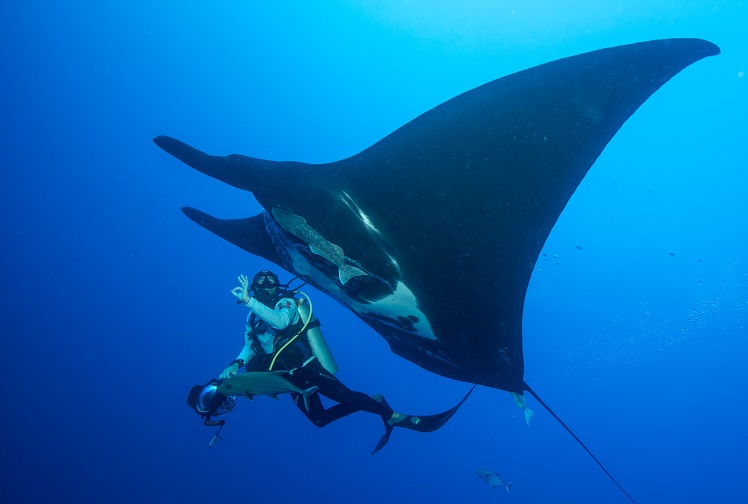Lionfish in Coral Gardens
12-Aug-2013 Back to Image Gallery
Lionfish are one of the oceans most artistic subjects; it is impossible to resist photographing them at every opportunity. Consequently every photographer will have Lionfish images in their portfolio! The challenge therefore is to capture a Lionfish in a multi subject image that sets a living stage so to speak for the fish in its environment. I have tried many times before but somehow just the right opportunity eluded me. However, while exploring Wakatobi resorts pristine reefs I came across this bold lionfish among a school of baitfish and beautiful corals that are such a feature of this region. In many respects the picture formed itself. Since I had the right lens installed in my camera housing, I just had to juggle all the technical skills needed by an underwater photographer to capture it! Wakatobi Resort is accessed by a short flight from Bali. Our tour there in 2012 introduced us to a beautiful, private, eco sensitive resort and provided us with dives on the most pristine reefs I have ever seen, reefs teeming with marine life due to the protection provided by the Wakatobi marine park zone. These reefs in the region of the coral triangle are the world's richest reefs with the most biodiversity of marine life in the world's oceans. So, naturally we have planned a return trip in September 2013.
Photo Data: Location: Dive site, Blade, Wakatobi, South Sulawesi. Genre: Wide Angle Close Up. Photo Data: Nikon D200, Nikkor 10.5 lens + 1.4 Teleconvertor, Seacam Housing, Dual Seacam Sea Flash150 Strobes, Manual Exposure Mode. ISO 100. Exposure f10 @ 1/125th sec. Image by Kevin Deacon.
Photo Hints: Wide angle close up style is achieved by the use of wide angle lenses at very close distance. In this example my camera dome would have been about 30 centimetres from the Lionfish. This type of photography can be done with any underwater camera as long as a wide angle lens is available. This is a lens with a FOV (Field of View) of about 100 degrees. EQUIPMENT COMMENTS: Apart from a wide angle lens it is also important to use long strobe arms to reduce or eliminate backscatter. Dual strobes are also very helpful as a single strobe will often produce harsh shadows when the photographer is this close to the subject.
Interesting Facts: The Lionfish, (Pterois volitans) is just one member of the scorpionfish family which includes Stonefish, demon Stingers, Southern Rockcod and many others. This family of fish is very aptly named as the venomous spines on their dorsal and pectoral fins can deliver agonisingly painful stings. In my experience this fish has stung more underwater photographers (and models) than any other species. This is due to one or the other attempting to manoeuvrer the fish into a better setting or pose, a very silly idea that will soon have one believing in such a thing as `karma'! Lionfish historically did not occur in the Caribbean. However, recently some specimens escaped from a ruined aquarium damaged in a hurricane and have bred out of control to such an extent that other local species of fish are under threat from a predator they are unfamiliar with. In an attempt to control the spread of these fish they are now on the menu at many seafood restaurants in the Caribbean!



